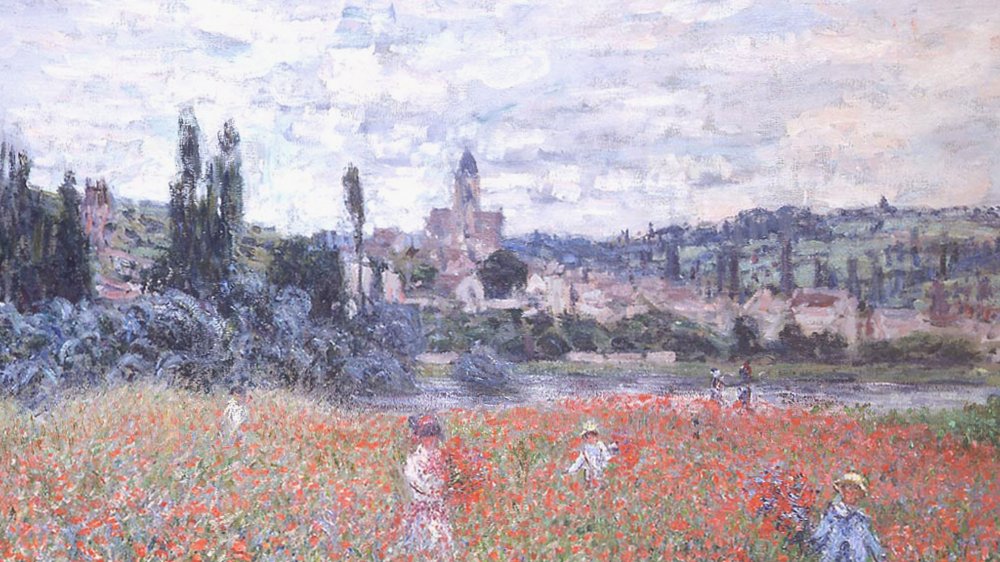The Truth Of Claude Monet's Ultraviolet Eye
Claude Monet's paintings portray the beautiful scenery of gardens and ponds all around France, and while sometimes blurry, many of them make you feel as if you are in a dream. The colors in his work are so vivid that they seem unreal (unlike that banana art piece you heard about). However, Monet wasn't just showing his artistic flair with such colors — he was depicting how he really saw the world.
Monet suffered from cataracts in his later life, according to Carl Zimmer. The American Academy of Opthalmology explains that cataracts, which also can change the color of your eyes, are caused by the buildup of proteins on the lenses, making your vision cloudy or blurry. Cataracts prevent light from entering the retina, so the images are not as sharp. In an experiment, Michael Marmor, an ophthalmologist at Stanford University's School of Medicine, sought to recreate paintings by artists with eye problems, using photos which he then blurred accordingly, to demonstrate how someone with cataracts sees the world. These pictures were surprisingly close to how Monet painted.
You can imagine how devastating this can be for a painter who wants to present the world in their way. Since Monet saw the world as blurry, his paintings began to reflect that. The artist finally became so frustrated that agreed to have surgery to remove cataracts at the age of 82, according to Zimmer, and this surgery would forever change his painting style.
Monet's world looked totally different
After the surgery, Monet's vision not only cleared up, but he began seeing colors he never saw before. PetaPixel explains that Monet's surgery meant the entire lens of his left eye had to be removed, leaving him with what's called aphakia, or the absence of an eye lens. People with aphakia become sensitive to infrared and ultraviolet light — light that you don't normally see, because the lens filters it out — and this ultraviolet vision made Monet see the world in a bluish tint. His later paintings feel sad, as if he was painting on a rainy day, because everything had a slight blue or gray tint to it. A paper from the British Journal of General Practice states that Monet did not intend to paint that way, he just saw bluer tones because of his changed eyes.
Monet may have been one of the founders of the Impressionist Movement, where thin brushstrokes were meant to evoke the passage of light and time, but most of his work wasn't an experiment in style. Rather, it was because he couldn't help himself: that was how the world looked to him, so he had to adapt.
So, next time you see a Monet painting, don't think that the respected artist did it that way that because he wanted to make it all blurry and/or blue. That's just how he saw things.

